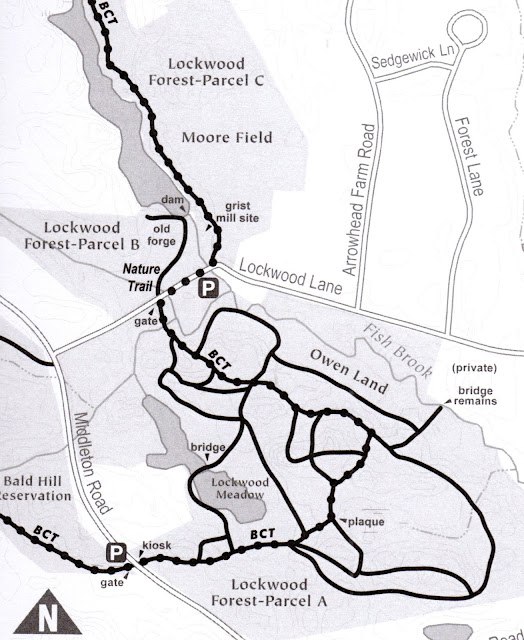 I've made it my hobby these last few years to visit historic sites related to the Industrial Revolution in New England. Some of the locations I've written about on this blog include the Saugus Iron Works, Slater Mill, Mount Hope Finishing Company, Ames Shovel Collection, the entrepreneurs buried at Mount Auburn here and here, Lowell mills, and homage to the steam age at the Waltham Watch Company and the Yankee Steam-Up. With a perfect Columbus Day weekend upon us, it seemed like a good time to organize yet another great Industrial Revolution adventure--but this one only about 2.5 miles from home.
I've made it my hobby these last few years to visit historic sites related to the Industrial Revolution in New England. Some of the locations I've written about on this blog include the Saugus Iron Works, Slater Mill, Mount Hope Finishing Company, Ames Shovel Collection, the entrepreneurs buried at Mount Auburn here and here, Lowell mills, and homage to the steam age at the Waltham Watch Company and the Yankee Steam-Up. With a perfect Columbus Day weekend upon us, it seemed like a good time to organize yet another great Industrial Revolution adventure--but this one only about 2.5 miles from home.Lockwood Forest is a conservation area of 100 acres which abuts Fish Brook, a tributary of the Ipswich River, and some 2,000 additional acres of conversation land in my hometown of Boxford. There are miles of trails and, depending on the season, hikers and horses or snow-shoe-ers and x-country skiers. This weekend the horse-and-riders were out and about.
In 1670, local entrepreneurs constructed the Bromingum Iron Forge on Fish Brook. Better known as the Rowley Village Forge, it was run by Henry Leonard, a skilled English ironworker who also played an important role at the ironworks in Braintree, and at the the Saugus Iron Works.
 |
| Here's the trail in to the forge site. |
The forge used local bog ore and featured three hearths, a water-powered bellows and trip hammer. We're told it was unsuccessful almost from the start, and would eventually be driven out of business by cheaper English imports. The issue could have been one of distance; at some 25 miles from Boston, Boxford is, even today--and I say this lovingly--nowhere. In 1670, five years before the outbreak of King Philip's War, it was not only nowhere, but dangerous and nowhere. (My post on General Solomon Lowe described the problems a New York Times reporter had in finding Boxford in 1901.)
George Rogers Taylor's Transportation Revolution tells us that it cost $9.00 to cart a ton of goods 30 miles in colonial America--and $9.00 to ship a ton of goods 3,000 miles to America by sea from England. In other words, shipping costs from Boxford to Boston and from London to Boston were essentially identical. Hauling bog iron into the bloomery and finished product out of the deep wood may have made the entire venture chancy from the start.
 |
| Here's the existing dam. I'm standing somewhere in the general vicinity of the iron works. |
continued making iron at the forge without the owner's approval until the ironworks burned down. There is no evidence that Nathaniel set the fire, but he did stand by and watch it burn. He was subsequently banished from the town.
(Ah, for the days when we could banish bad actors from town.)
Sidney Perley's history of Boxford, published in 1880, tell us that "indentations and upheavals on the surface of the ground are said to mark the site of the iron-works." Needless to say, 135 years later I had little chance of finding any signs of the forge. Still, I always find there's something about being on historic ground that makes a visit special.
 |
| Here's the dam, which I am about to cross. It was a little more slippery than I had anticipated. Actually, it was a LOT more slippery than I had expected. |
 |
| Here's the view of Fish Brook from the center of the dam. My feet have since dried. |
Another early industrialist constructed a saw and gristmill nearby, on the opposite side of Fish Brook. It seems that subsequent mill activity followed. Today, a 19th-century water-powered turbine (a "turn wheel") stands in the midst of the raceway as a kind of monument to the Industrial Revolution.
 |
| Cool, eh? It kind of catches you by surprise. |
 |
| All I could think was: "Take me to your leader." Not exactly an industrial-revolutionary impulse. |
A portion of the foundation of the later mill building(s) is nearby and still intact.
The trail guide says that "skunk cabbage and rushing water here announce the onset of spring." My take was that wet feet and rushing water here announced the end of my visit.
Needless to say, there are no iron bloomeries or great mills today in Boxford. There are, however, over 100 miles of trails, more than few horses, and snowshoes hanging in the garage awaiting the first big storm of winter, which cannot be far away.

